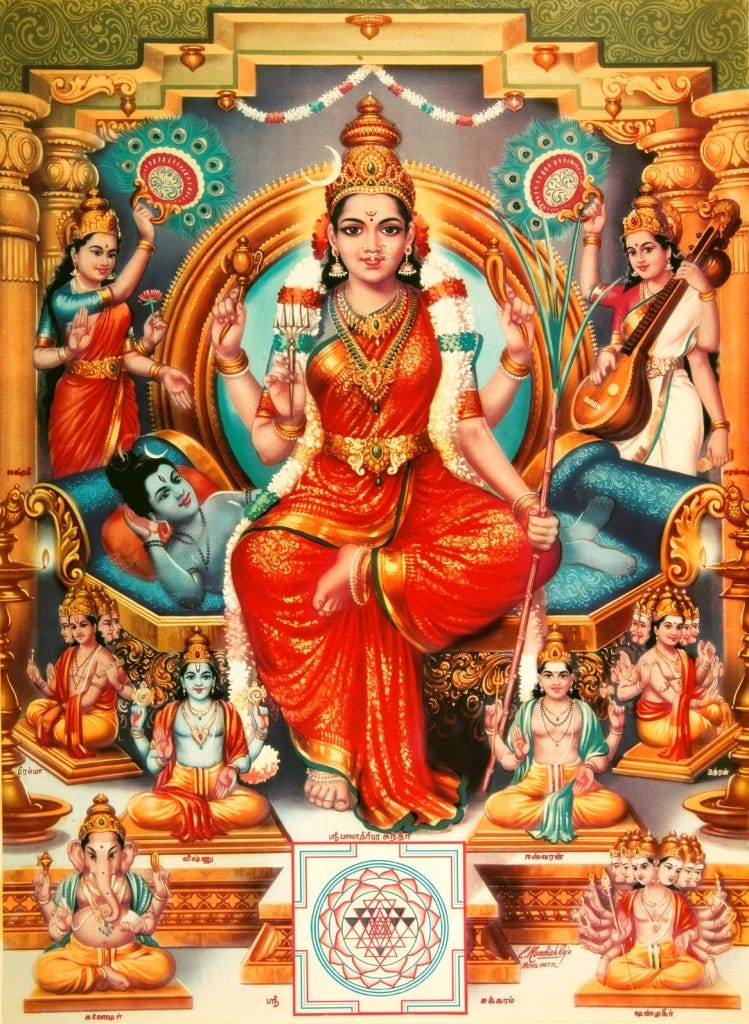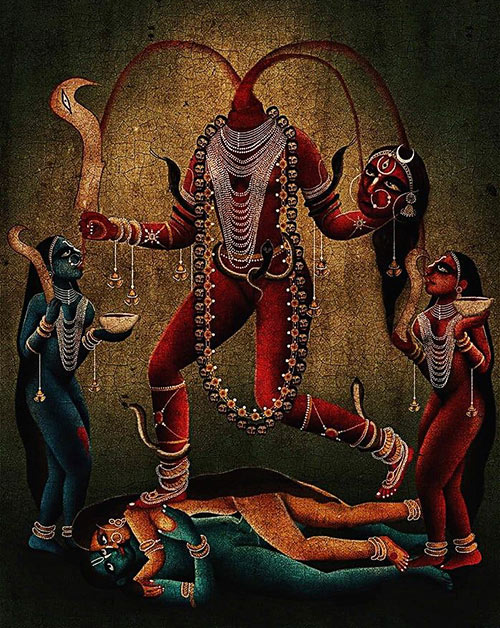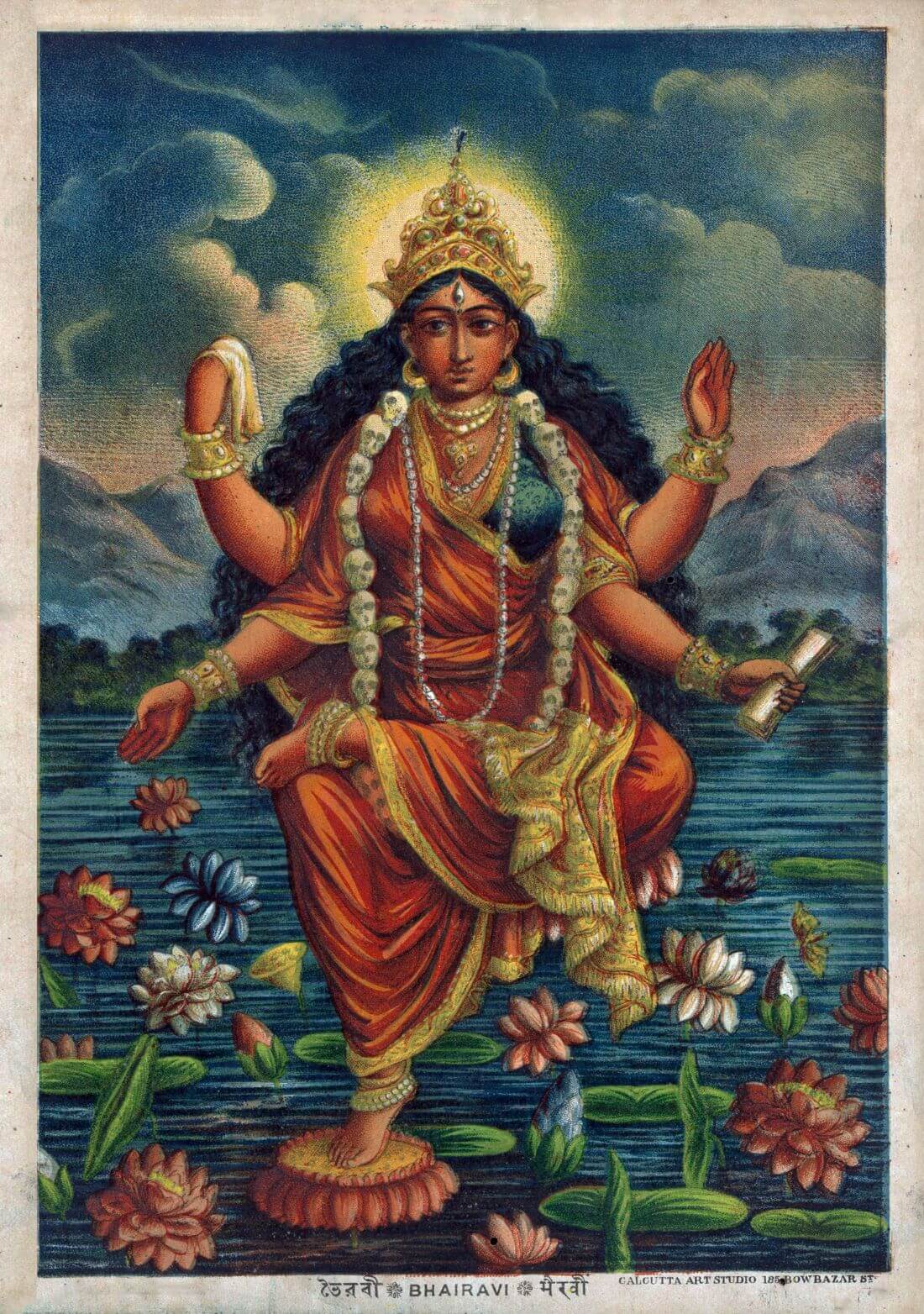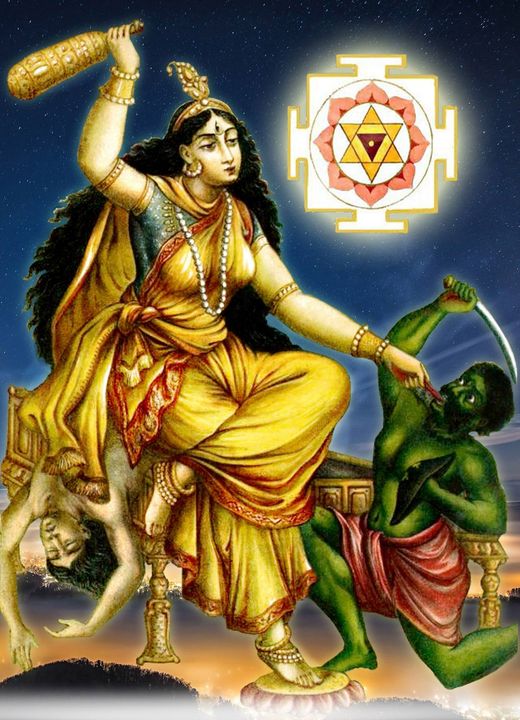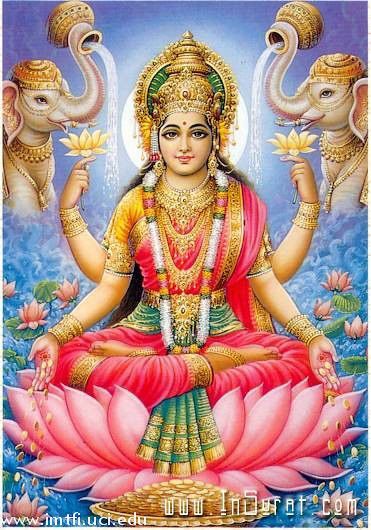Introduction
Tantra, a profound and intricate spiritual tradition, includes a diverse array of practices, philosophies, and deities. Within the pantheon of Tantric worship, the Mahavidyas hold a unique and revered position. The term "Mahavidya" translates to "Great Wisdoms" or "Great Knowledges," and these ten goddesses each represent different facets of divine wisdom and cosmic power. Each Mahavidya embodies distinct qualities, symbolizing various aspects of the divine feminine. This blog will explore the origins, symbolism, and significance of each of the ten Mahavidyas, examining how they guide practitioners on their spiritual journey.
Origins and Legends
The concept of the Mahavidyas finds its roots in ancient Hindu scriptures, particularly in Tantric texts. The most well-known legend associated with the Mahavidyas involves the goddess Sati and her consort, Lord Shiva. According to the story, Sati's father, King Daksha, organized a grand yagna (sacrificial ritual) but deliberately did not invite Sati and Shiva. Enraged by this slight, Sati decided to attend the yagna uninvited. Despite Shiva's warnings, she confronted her father, who insulted her and Shiva. Unable to bear the insult, Sati immolated herself in the sacrificial fire.
In another version of the legend, as Shiva carried Sati's charred body across the universe, her body parts fell at different places, which later became sacred sites known as Shakti Peethas. In her fierce and transformative grief, Sati manifested herself in ten different forms, known as the Mahavidyas, each representing a unique aspect of her divine power and wisdom. These goddesses emerged to assist and guide spiritual seekers, offering different pathways to enlightenment.
The Ten Mahavidyas
Kali: The Fierce Goddess of Time and Change
Kali is perhaps the most well-known of the Mahavidyas. She is depicted with dark skin, a garland of skulls, and a skirt of severed arms. Her fierce appearance symbolizes the destructive and transformative power of time. Kali is the embodiment of Shakti, the primal energy, and represents the cycle of birth and death. She is both a destroyer of evil and a protector of the righteous. Devotees worship Kali to seek her blessings for liberation from the cycle of birth and death and to overcome fear and ignorance.Tara: The Savior Goddess and Protector
Tara is often depicted as a serene and compassionate goddess, guiding devotees across the ocean of existence. She is known as the "Savior" or "Star" and is associated with guidance, protection, and compassion. Tara's blue or green complexion symbolizes her boundless compassion and ability to soothe fears. She is particularly revered in Tibetan Buddhism, where she is seen as a liberator who helps devotees overcome obstacles and achieve spiritual awakening.Tripura Sundari: The Beautiful Goddess of the Three Worlds
Also known as Shodashi or Lalita, Tripura Sundari is the embodiment of beauty, love, and desire. She represents the ultimate reality, manifesting as beauty and harmony in the universe. Tripura Sundari is depicted as a young and radiant goddess, sitting on a lotus, symbolizing purity and divine grace. Her worship involves the use of sacred geometry, particularly the Sri Yantra, which represents the cosmos and the body of the goddess herself.Bhuvaneshvari: The Goddess of the Universe
Bhuvaneshvari is the queen of the universe, embodying the cosmic power that creates and sustains all existence. She is depicted as a serene and motherly figure, reflecting her nurturing and all-encompassing nature. Bhuvaneshvari's name means "Mistress of the World," and she is associated with the element of space. Devotees worship her to gain insight into the interconnectedness of all life and to cultivate a sense of unity and compassion.Chinnamasta: The Self-Decapitated Goddess
Chinnamasta is one of the most visually striking and esoteric Mahavidyas. She is depicted holding her own severed head, with streams of blood feeding her attendants. This fierce imagery symbolizes self-sacrifice, the transcendence of the ego, and the flow of life energy. Chinnamasta represents the power of self-control and the release of worldly attachments. Her worship is often undertaken by those seeking to overcome deep-seated fears and desires.Bhairavi: The Fierce Goddess
Bhairavi is a terrifying and awe-inspiring goddess, representing the fierce aspect of the divine feminine. She is often depicted with a fierce expression, adorned with skulls and weapons. Bhairavi embodies the power of destruction that clears the path for new creation. She is associated with the transformative power of the Kundalini energy and is worshipped by those seeking to awaken this latent spiritual force within themselves.Dhumavati: The Widow Goddess
Dhumavati is the goddess of death, decay, and disappointment. She is depicted as an old, widow-like figure, representing the inauspicious and destructive aspects of life. Despite her fearsome appearance, Dhumavati is revered as a powerful teacher who helps devotees understand the transient nature of life and the importance of detachment. Her worship involves embracing the darker aspects of existence to gain spiritual insight and wisdom.Bagalamukhi: The Goddess Who Paralyzes Enemies
Bagalamukhi is a potent and mysterious goddess, known for her ability to paralyze and control enemies. She is depicted holding the tongue of a demon, symbolizing her power to silence and immobilize negative forces. Bagalamukhi's worship is sought by those seeking victory in conflicts, protection from harm, and control over their speech and actions. She represents the power of stillness and the ability to overcome obstacles through inner strength.Matangi: The Goddess of Inner Thought and Speech
Matangi is the goddess of wisdom, inner thought, and communication. She is depicted with a dark complexion, symbolizing her connection to the deeper, hidden aspects of the mind. Matangi is often associated with the outcast and marginalized, representing the wisdom that comes from unconventional sources. Her worship involves practices to enhance intuition, creativity, and eloquence, helping devotees access and express their inner truths.Kamala: The Tantric Form of Lakshmi
Kamala is the embodiment of prosperity, beauty, and fertility, and is often equated with the goddess Lakshmi in her Tantric form. She is depicted as a radiant and beautiful goddess, sitting on a lotus, symbolizing purity and spiritual growth. Kamala's worship involves rituals to attract abundance, wealth, and well-being. She represents the harmonious balance between material and spiritual prosperity.
Conclusion
The ten Mahavidyas offer a diverse and profound pathway for spiritual seekers, each embodying unique aspects of divine wisdom and power. Through their worship, devotees can explore the multifaceted nature of the divine feminine, gaining insight, empowerment, and transformation. Whether one seeks protection, prosperity, wisdom, or liberation, the Mahavidyas provide a rich and varied tapestry of spiritual practices and teachings. By understanding and connecting with these goddesses, practitioners can embark on a journey of profound self-discovery and spiritual growth, guided by the ancient and timeless wisdom of Tantra.


